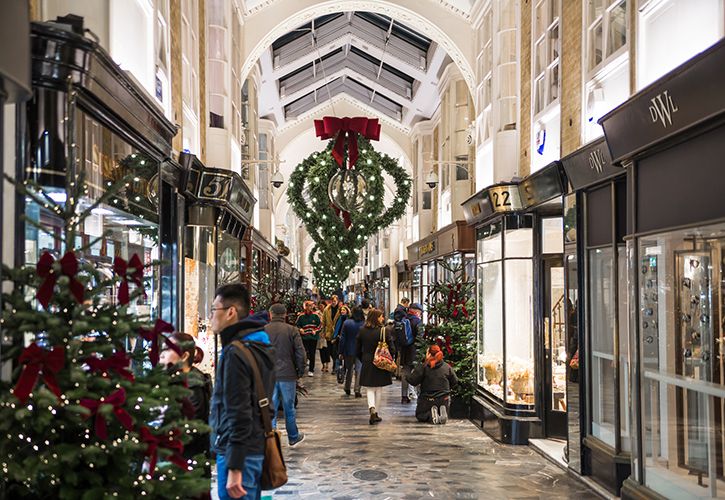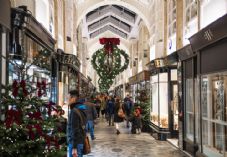UK DIY News
MRI: December Retail Footfall Reveals Marginal Annual Rise

- Footfall rose by +7.1% in December from November in all UK retail destinations led by a +13.2% boost in shopping centre footfall, followed by a +5.7% rise in retail parks, and by +4.8% in high streets. This is the greatest month on month increase seen since 2019 when footfall rose by +8.7% for the same time period.
- Compared to 2023 levels, footfall in UK retail destinations was marginally higher by +0.4% in all UK retail destinations driven by a +1.2% rise in retail park activity. High streets also saw a marginal uplift of +0.3% however shopping centres saw a minor drop of -0.1%, which may well indicate the pressures of the cost-of-living crisis still existing for many.
- 24/7 data revealed that footfall remained strong in all UK retail destinations during the evening and night time period with an average rise +1.6% recorded, suggesting not only a shift in when consumers are visiting retail destinations but the investment in leisure activities available to serve the growing evening and night-time economy.
- Retailers are bracing themselves for a challenging start to 2025 following the Autumn Budget as it’s set to bring with it financial challenges; rising costs are anticipated and decisions will need to be made as to whether these costs are passed onto the consumers or absorbed by retail businesses.
A strong December played out for UK retail stores and destinations as footfall rose by +7.1% from November. This was driven by a +13.2% rise in shopping centre footfall followed by a +5.7% rise in retail parks which is a nod to the vast array of retail and leisure options available for consumers, especially during the festive period. High streets also saw footfall rise by +4.8% from the month prior suggesting many visited towns and cities across the UK to make the most of the festive events and attractions which are only in place for a limited period of time. Compared to last year, footfall rose marginally in retail parks (+1.2%) and high streets (+0.3%) whereas shopping centres experienced a decline of -0.1%. This may be reflective of the financial pressures facing many consumers at this time of year and the increased costs that are typically associated with the winter period.
A shift in consumer behaviour over the last 12 months is evident in MRI Software’s footfall data spanning a 24 hour period, seven days a week. In December, trends revealed an average rise of +1.6% during the early evening and night time period across all UK retail destinations when compared against December 2023. This was strong in all destination types and is likely due to the rise of leisure and hospitality establishments now available in shopping centres and retail parks. For high streets, the experiential factor likely came in the form of festive markets and events contributing to the overall annual rise during this period. It also provides the convenience factor for consumers who are working during the day in the lead up to Christmas, which retailers may have taken note of from footfall trends in previous years.
This year, Christmas Day fell midweek which provided consumers with an extra couple of days earlier in the week to head to the shops and grab those last-minute gifts and groceries. Retail stores and destinations also benefited from an additional boost on the other side of Christmas as shoppers emerged from their post-Christmas slumber to take advantage of the Boxing Day sales and restock on groceries however this didn’t occur until 27th December. A subdued start to the Boxing Day sales saw footfall decline by -4.9% in all UK retail destinations in comparison to Boxing Day last year. The decline in Boxing Day activity likely reflects a shift in consumer behaviour, influenced by the ongoing cost-of-living crisis. With footfall levels +18.1% higher in all UK retail destinations on Christmas Eve this year compared to Christmas Eve last year, many shoppers may well have concentrated much of their spending in a pre-Christmas rush.
Additionally, the growing presence of online shopping continues to reshape spending habits; many retailers kicked off their Boxing Day sales online on Christmas Day providing shoppers with the opportunity to grab early bargains from the comfort of their own home. This is further supported by MRI Software’s Consumer Pulse Report which identified that 53% of shoppers planned to complete at least half of their Christmas shopping online; a trend which may well continue into the period between Christmas and New Year. Many key stores also remained closed on Boxing Day– John Lewis, Marks & Spencer, Next and Aldi – and many people were still visiting families.
The turn in activity came on the 27th and 28th December with shoppers emerging from their post-Christmas slumber looking to replenish their groceries and see what Boxing Day bargains are available. Over this two-day period, footfall rose by an average of +8.8% compared with the same date period last year. This was driven by a +13.2% uplift in high street activity suggesting shoppers were keen to make the most of the festive markets and enjoying leisure activities such as trips to the theatre and sporting events.
Retailers are bracing themselves for a challenging start to 2025 following the Autumn Budget which was revealed towards the end of October; this will bring with it financial challenges with rising costs anticipated and decisions will need to be made as to whether these costs are passed onto the consumers or absorbed by the business. This will no doubt impact retail stores and destinations in high streets, shopping centres and retail parks. Looking ahead to the next 6 months, MRI Software’s latest Consumer Pulse report revealed that 51% of shoppers are concerned about the rising cost of living driven primarily by higher energy and housing costs as winter approaches. Retail leaders should bear these trends in mind as the surge in festive footfall may well be the last big splurge for many consumers ahead of what could be a spending freeze heading into early 2025. Leveraging data-driven insights to drive operational efficiencies such as adapting resourcing and energy to traffic peaks and troughs will become even more business-critical.
December 2024 - UK | ||||
% Change | OnLocation Footfall Index | High Street Index | Retail Park Index | Shopping Centre Index |
Monthly | +7.1% | +4.8% | +5.7% | 13.2% |
Annual | +0.4% | +0.3% | +1.2% | -0.1% |
Source : MRI Software
Image : IR_Stone / iStock / 2185925402
Insight provides a host of information I need on many of our company’s largest customers. I use this information regularly with my team, both at a local level as well as with our other international operations. It’s extremely useful when sharing market intelligence information with our corporate office.











































